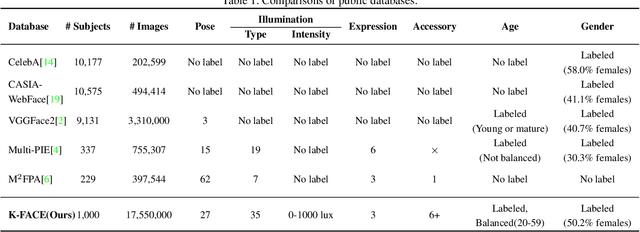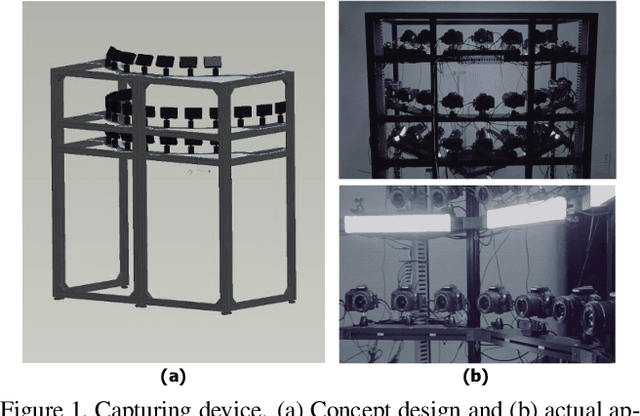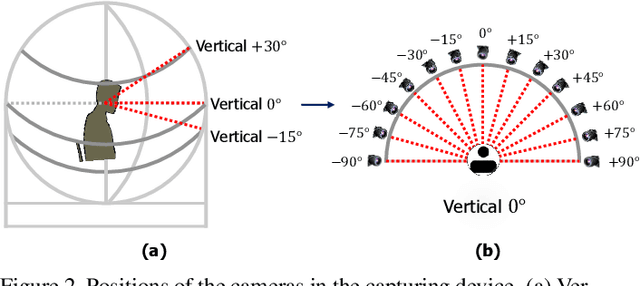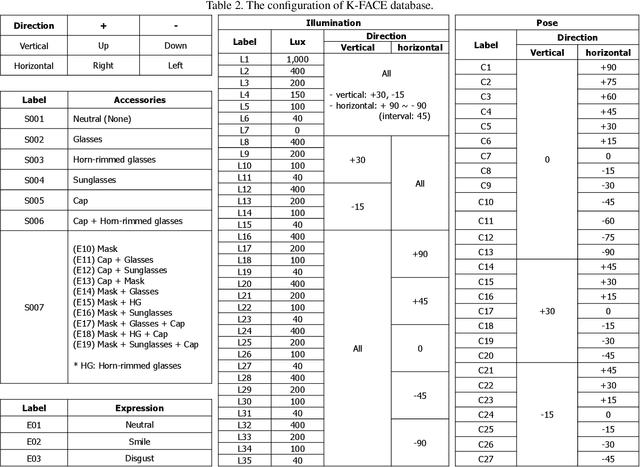Haksub Kim
IG-FIQA: Improving Face Image Quality Assessment through Intra-class Variance Guidance robust to Inaccurate Pseudo-Labels
Mar 13, 2024Abstract:In the realm of face image quality assesment (FIQA), method based on sample relative classification have shown impressive performance. However, the quality scores used as pseudo-labels assigned from images of classes with low intra-class variance could be unrelated to the actual quality in this method. To address this issue, we present IG-FIQA, a novel approach to guide FIQA training, introducing a weight parameter to alleviate the adverse impact of these classes. This method involves estimating sample intra-class variance at each iteration during training, ensuring minimal computational overhead and straightforward implementation. Furthermore, this paper proposes an on-the-fly data augmentation methodology for improved generalization performance in FIQA. On various benchmark datasets, our proposed method, IG-FIQA, achieved novel state-of-the-art (SOTA) performance.
K-FACE: A Large-Scale KIST Face Database in Consideration with Unconstrained Environments
Mar 03, 2021



Abstract:In this paper, we introduce a new large-scale face database from KIST, denoted as K-FACE, and describe a novel capturing device specifically designed to obtain the data. The K-FACE database contains more than 1 million high-quality images of 1,000 subjects selected by considering the ratio of gender and age groups. It includes a variety of attributes, including 27 poses, 35 lighting conditions, three expressions, and occlusions by the combination of five types of accessories. As the K-FACE database is systematically constructed through a hemispherical capturing system with elaborate lighting control and multiple cameras, it is possible to accurately analyze the effects of factors that cause performance degradation, such as poses, lighting changes, and accessories. We consider not only the balance of external environmental factors, such as pose and lighting, but also the balance of personal characteristics such as gender and age group. The gender ratio is the same, while the age groups of subjects are uniformly distributed from the 20s to 50s for both genders. The K-FACE database can be extensively utilized in various vision tasks, such as face recognition, face frontalization, illumination normalization, face age estimation, and three-dimensional face model generation. We expect systematic diversity and uniformity of the K-FACE database to promote these research fields.
 Add to Chrome
Add to Chrome Add to Firefox
Add to Firefox Add to Edge
Add to Edge